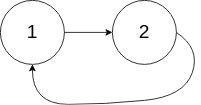1. One Edit Distance String Comparison
Given two strings s and t, return true if they are both one edit distance apart, otherwise return false.
A string s is said to be one distance apart from a string t if you can:
Insert exactly one character into s to get t.
Delete exactly one character from s to get t.
Replace exactly one character of s with a different character to get t.
Example 1:
Input: s = "ab", t = "acb" Output: true Explanation: We can insert 'c' into s to get t.
Example 2:
Input: s = "", t = "" Output: false Explanation: We cannot get t from s by only one step.
Constraints:
0 <= s.length, t.length <= 104
s and t consist of lowercase letters, uppercase letters, and digits.
A string s is said to be one distance apart from a string t if you can:
Insert exactly one character into s to get t.
Delete exactly one character from s to get t.
Replace exactly one character of s with a different character to get t.
Example 1:
Input: s = "ab", t = "acb" Output: true Explanation: We can insert 'c' into s to get t.
Example 2:
Input: s = "", t = "" Output: false Explanation: We cannot get t from s by only one step.
Constraints:
0 <= s.length, t.length <= 104
s and t consist of lowercase letters, uppercase letters, and digits.
2. Array Game
给定一个整数数组,确定移动次数,使所有元素相等。每次移动包括选择除1个元素以外的所有元素并将其值增加1。
示例数字=[3,4,6,6,3]在每次移动期间选择5个元素中的4个,并将每个元素的值递增1。
3. Detecting Cycle in a Linked List
Given head, the head of a linked list, determine if the linked list has a cycle in it.
There is a cycle in a linked list if there is some node in the list that can be reached again by continuously following the next pointer. Internally, pos is used to denote the index of the node that tail's next pointer is connected to. Note that pos is not passed as a parameter.
Return true if there is a cycle in the linked list. Otherwise, return false.
Example 1:

Input: head = [3,2,0,-4], pos = 1 Output: true Explanation: There is a cycle in the linked list, where the tail connects to the 1st node (0-indexed).
Example 2:

Input: head = [1,2], pos = 0 Output: true Explanation: There is a cycle in the linked list, where the tail connects to the 0th node.
Example 3:

Input: head = [1], pos = -1 Output: false Explanation: There is no cycle in the linked list.
Constraints:
- The number of the nodes in the list is in the range [0, 104].
- -105 <= Node.val <= 105
- pos is -1 or a valid index in the linked-list.
Follow up: Can you solve it using O(1) (i.e. constant) memory?
4. Onsite Interview Questions
The onsite interview consists of two 45-minute rounds with LeetCode easy and medium difficulty problems, resume discussion, and a small part of probability and brainteasers.
5. Technical Assessment Questions
The technical assessment consists of LeetCode medium difficulty problems.


